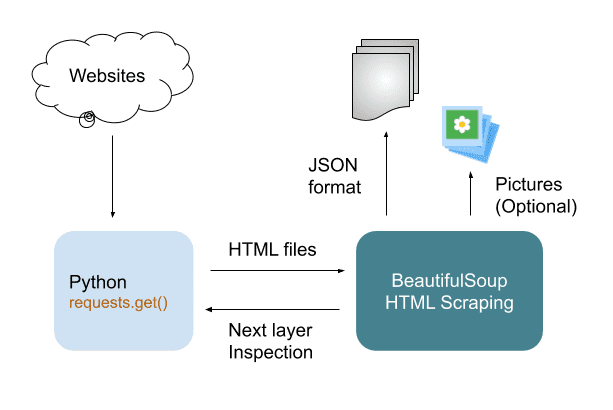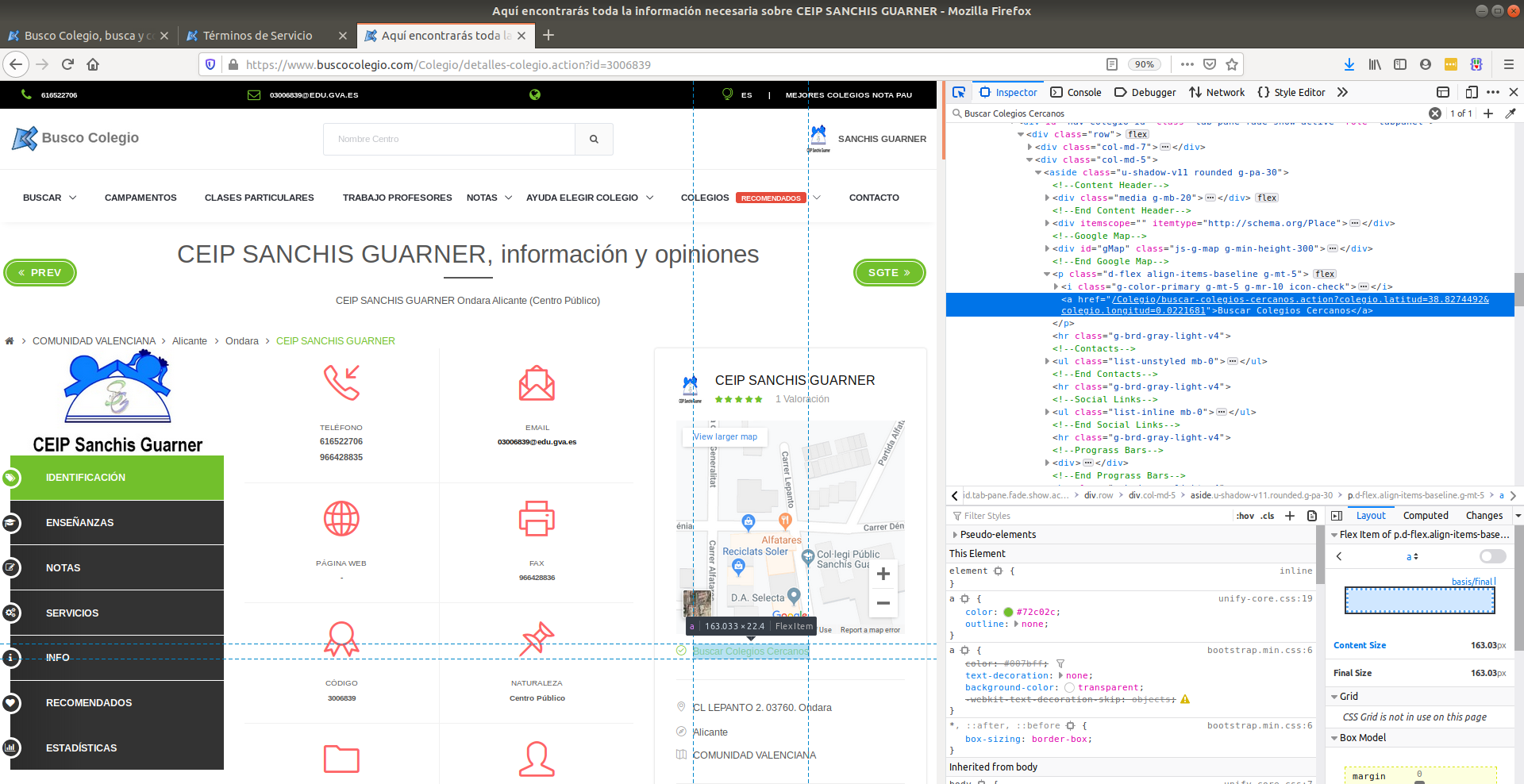This tutorial is about download image and media using Python web scraping. Import urlopen from bs4 import BeautifulSoup as soup myurl. This is when web scraping becomes the go-to method. Given Python’s popularity for data science, it’s essential to learn this skill to automate this data collection process. Following an example, you’ll learn: the general process of web scraping using Python; and in particular, how to use Beautiful Soup, a popular Python library. Web Scraping using Python and BeautifulSoup. Firstly, I will demonstrate you with very basic HTML web page. And later on, show you how to do web scraping on the real-world web pages. The first thing we’ll need to do to scrape a web page is to download the page. We can download pages using the Python requests library. The requests library will.
- Web Scraping Images Beautifulsoup Design
- Web Scraping Images Beautiful Soup Recipe
- Web Scraping Using Beautifulsoup
- Web Scraping Images Beautiful Soup Recipes
This post is part 1 of the 'Advanced Scraping' series:
The Python documentation, wikipedia, and most blogs (including this one) use static content. When we request the URL, we get the final HTML returned to us. If that's the case, then a parser like BeautifulSoup is all you need. A short example of scraping a static page is demonstrated below. I have an overview of BeautifulSoup here.
A site with dynamic content is one where requesting the URL returns an incomplete HTML. The HTML includes Javascript for the browser to execute. Only once the Javascript finishes running is the HTML in its final state. This is common for sites that update frequently. For example, weather.com would use Javascript to look up the latest weather. An Amazon webpage would use Javascript to load the latest reviews from its database. If you use a parser on a dynamically generated page, you get a skeleton of the page with the unexecuted javascript on it.
- The output in the notebook is an empty list, because javascript hasn't generated the items yet. Alternatives to Selenium. Using Selenium is an (almost) sure-fire way of being able to generate any of the dynamic content that you need, because the pages are actually visited by a browser (albeit one controlled by Python rather than you).
- Web Scraping “Web scraping (web harvesting or web data extraction) is a computer software technique of extracting information from websites.” HTML parsing is easy in Python, especially with help of the BeautifulSoup library. In this post we will scrape a website (our own) to extract all URL’s.

This post will outline different strategies for scraping dynamic pages.
An example of scraping a static page
Let's start with an example of scraping a static page. This code demonstrates how to get the Introduction section of the Python style guide, PEP8:
This prints
IntroductionThis document gives coding conventions for the Python code comprisingthe standard library in the main Python distribution. Please see thecompanion informational PEP describing style guidelines for the C codein the C implementation of Python [1]...
Volia! If all you have is a static page, you are done!
The straightforward way to scrape a dynamic page
The easiest way of scraping a dynamic page is to actually execute the javascript, and allow it to alter the HTML to finish the page. We can pass the rendered (i.e. finalized) HTML to python, and use the same parsing techniques we used on static sites. The Python module Selenium allows us to control a browser directly from Python. The steps to Parse a dynamic page using Selenium are:
- Initialize a driver (a Python object that controls a browser window)
- Direct the driver to the URL we want to scrape.
- Wait for the driver to finish executing the javascript, and changing the HTML. The driver is typically a Chrome driver, so the page is treated the same way as if you were visiting it in Chrome.
- Use
driver.page_sourceto get the HTML as it appears after javascript has rendered it. - Use a parser on the returned HTML
The website https://webscraper.io has some fake pages to test scraping on. Let's use it on the page https://www.webscraper.io/test-sites/e-commerce/ajax/computers/laptops to get the product name and the price for the six items listed on the first page. These are randomly generated; at the time of writing the products were an Asus VivoBook (295.99), two Prestigio SmartBs (299 each), an Acer Aspire ES1 (306.99), and two Lenovo V110s (322 and 356).
Web importer mendeley on firefox. Once the HTML has been by Selenium, each item has a div with class caption that contains the information we want. The product name is in a subdiv with class title, and the price is in a subdiv with the classes pull-right and price. Here is code for scraping the product names and prices:
Trying scraping a dynamic site using requests
What would happen if we tried to load this e-commerce site using requests? That is, what if we didn't know it was a dynamic site?
The html we get out can be a little difficult to read directly. If you are using a terminal, then you can save the results from r.html to a file and then load it in a browser. If you are using a Jupyter notebook, you can actually use a neat trick to render the output in your browser:
The output in the notebook is an empty list, because javascript hasn't generated the items yet.

Using Selenium is an (almost) sure-fire way of being able to generate any of the dynamic content that you need, because the pages are actually visited by a browser (albeit one controlled by Python rather than you). If you can see it while browsing, Selenium will be able to see it as well.
There are some drawbacks to using Selenium over pure requests:


- It's slow.
We have to wait for pages to render, rather than just grabbing the data we want.
- We have to download images and assets, using bandwidth
Web Scraping Images Beautifulsoup Design
Related to the previous point, even if we are just parsing for text, our browser will download all ads and images on the site.
- Chrome takes a lot of memory
When scraping, we might want to have parallel scrapers running (e.g. one for each category of items on an e-commerce site) to allow us to finish faster. If we use Selenium, we will have to have enough memory to have multiple copies running.
- We might not need to parse
Often sites will make API calls to get the data in a nicely formatted JSON object, which is then processed by Javascript into HTML entities. When using a parser such as BeautifulSoup, we are reading in the HTML entities, and trying to reconstruct the original data. It would be a lot slicker (and less error prone) if we are able to get the JSON objects directly.
- Selenium (like parsing) is often tedious and error-prone
The bad news for using the alternative methods is that there are so many different ways of loading data that no single technique is guaranteed to work. Singlefile firefox free. The biggest advantage Selenium has is that it uses a browser, and with enough care, should be indistinguishable from you browsing the web yourself.
Other techniques
Web Scraping Images Beautiful Soup Recipe
This is the first in a series of articles that will look at other techniques to get data from dynamic webpages. Because scraping requires a custom approach to each site we scrape, each technique will be presented as a case study. The examples will be detailed enough to enable you to try the technique on other sites.
Web Scraping Using Beautifulsoup
| Technique | Description | Examples |
|---|---|---|
| Scheme or Opengraph MetaData | OpenGraph is a standard for allowing sites like Facebook to easily find what your page is 'about'. We can scrape the relevant data directly from these tags | ??? Need example ??? |
| JSON for Linking Data | This is a standard for putting JSON inside Javascript tags | Yelp |
| XHR | Use the same API requests that the browser does to get the data | Sephora lipsticks, Apple jobs |
Selenium summary

The short list of pros and cons for using Selenium to scrape dynamic sites.
Web Scraping Images Beautiful Soup Recipes
| Pros | Cons |
|---|---|
| * Will work | * Slow |
| * Bandwidth and memory intensive | |
| * Requires error-prone parsing |
